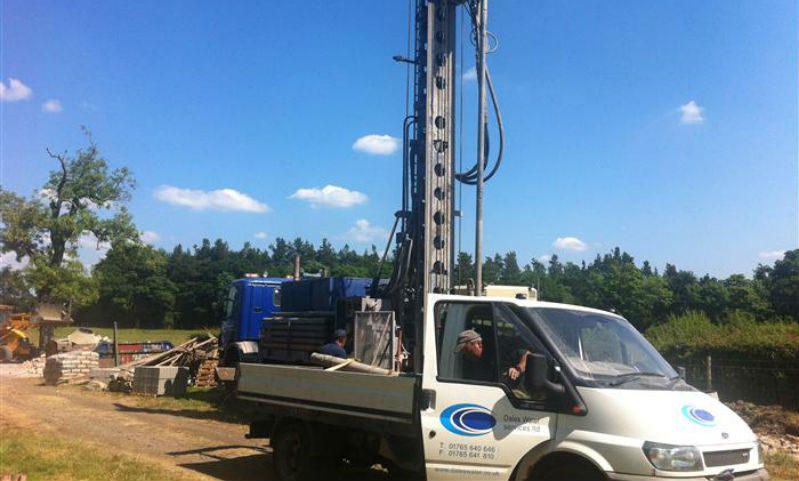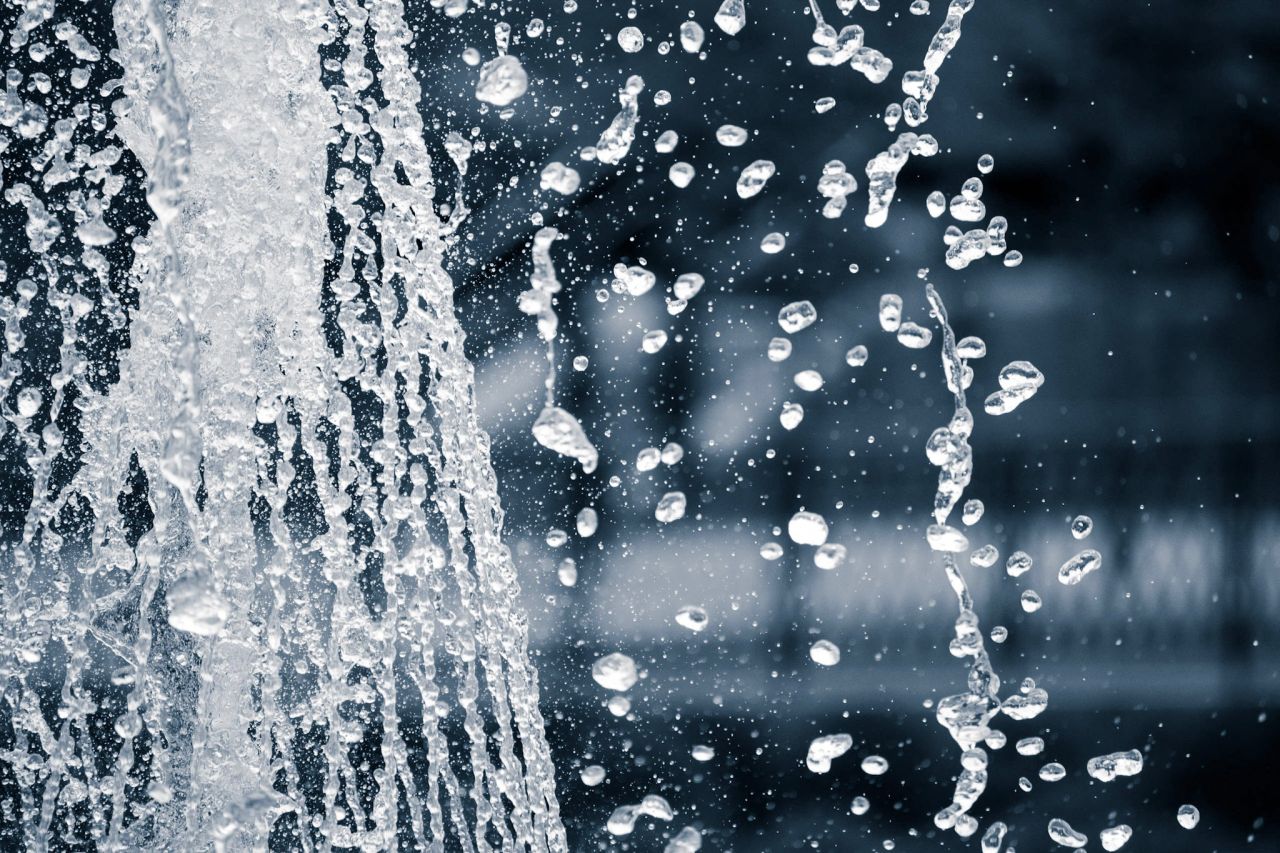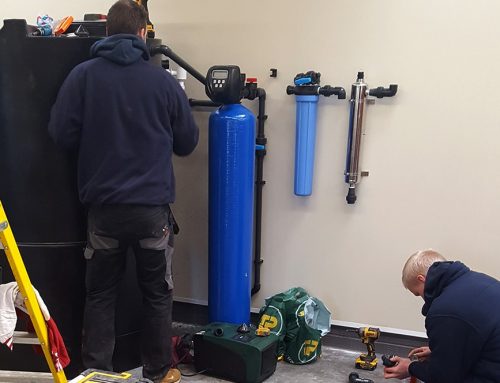Water is important but it’s an expensive resource that is easily influenced by infrastructure and climate, often leaving the pig farmer with an expensive, inadequate supply that is restricted in times of good weather. Furthermore, we are all seeing our mains water bills go up with reports of mains water companies making substantial profits at the expense of end users. Couple this with water dependant livestock, wash down and general agricultural use the volumes of water used can significantly accelerate along with the water mains bill that accompanies it in a short space of time.

Boreholes for Pig Farms
Pigs are heavy users of water and will consume a great deal of water throughout their life. Water is important for pig function, movement of nutrients into body tissue, production of milk, movement of waste, adjustment of body temperature, reproduction and importantly for the pig farmer, growth. Providing sufficient water produces better pigs that grow quicker and are healthier. There is continual loss of water through perspiration and waste products and therefore a constant need for replenishment of that lost water.
Use of water around the farm goes even further; it’s vital for keeping the farm tidy, it’s essential for mixed use farms that have other livestock, as well as providing irrigation water for the arable section and is frequently used for the household. Modern houses have water demanding systems that mean use and cost of water continues to rise. Waters use throughout the farm, and for the pig, cannot be underestimated.
With the constant squeeze on end product prices and the ever increasing energy bill, of which water is a significant factor, and a significant overhead, what can be done to assist in reducing this bill and to relieve the strain of long hot summers? As well as reduce the constant requirement to update old antiquated water delivery pipelines and poor pressure?
A water well abstraction borehole might just be the answer and several pig farmers are already exploiting the water under their feet to maximise their profits and solve their water problems.
What are the possibilities for a borehole water supply?
Borehole water supplies are dependent on the underlying geology of the site. Unfortunately, not everywhere in the country can benefit from a borehole to supply their water needs. Areas where rocks have undergone high levels of pressure, heating and where pour spaces in the rocks have been squeezed out are not going to be viable for borehole water supplies. In these instances spring water supplies that may exist on site can be exploited as potential sources, but boreholes are less likely to be successful.
However, vast swathes of the country are underlain by rocks of a porous nature, referred to as aquifers, where pour spaces and fractures in the rock exist and consequently a vast amount of water is present. Aquifers act like giant rain harvesting tanks but only bigger, aren’t subject to surface contamination and capable of providing water during dry periods when conventional rain water harvesting is inadequate. In these instances the pig farmer can take advantage of water under their feat to form their water supply. Thorough research must be carried out at this desk top stage to identify the potential for water to be present, any borehole driller should carry out due diligence and fully inform the client about their prospects, there is no point in drilling a dry borehole at great cost to all involved.
The depth that a borehole needs to be drilled will depend on the geology as well. There is no minimum or maximum depth, and again driller at desk top stage should have carried out their research into the underlying geology to identify what depth they may need to go to access sustainable water i.e. water can often be found at a shallow depth but once it’s pumped will it run dry? Will enough fractures have been intercepted to facilitate abstraction long term when pumped hard to provide a modern water supply?
This is often why many old, shallow wells are no longer suitable for modern water demands; they simply aren’t deep enough and take localised top water that is subject to the same climatic conditions as other surface water supplies. Drilling for the water you are looking for can in some instances mean casing out (sealing out) other rocks strata which are not as suitable or will only provide a lesser yield. Give, or take, across the UK boreholes will be approximately 60 – 70m deep to be sustainable but this needs to be taken with a pinch of salt with significant differences being possible.
In some circumstances accessing water in the aquifer will release pressure built up from the water in the rock, some rocks can be so full that when tapped into too they release that water under their own pressure and are referred to as artesian heads. This release of pressure will occur in all rocks but to what extent varies, in some the water just rebounds up into the borehole, whereas in others with greater pressure it comes over the top of the borehole.
The underlying geology of the site will influence the water quality that is provided. Again at desk top stage the driller should have taken account of the expected water quality and discussed this with the client. There are drinking water standards, set by the Drinking Water Inspectorate, for drinking water for human consumption and this should be the starting point for any driller, however pigs are different to humans and, in the main are much more tolerant of water quality, with much higher thresholds for poorer quality water. Occasionally the water from the borehole may still not be consistent with the proposed end use. However, very good treatment exists that is still economic if it has to be installed, capital expenditure costs just take a little longer to regain as discussed below but not too much longer.
What are abstraction licenses and do you need one? What are the benefits of having one?
In the UK all the water that falls is technically owned by the government. Doing this allows government to retain control over water, it means that no one can dam a river, harvest the water and cause a user downstream to have no water. However, the UK government have realised that we are, relatively speaking, a water rich country. Consequently in 2005 they deregulated controlled water abstractions, including those from boreholes to allow abstraction to take place without obtaining an abstraction licence up to a maximum of 20m3/day (20,000 litres or approximately 4400 gallons) in England and Wales, all controlled by the Environment Agency. The systems in Scotland are slightly different where different levels of abstraction require different notifications / licences to be made to the regulator – the Scottish Environmental Protection Agency.
It falls to the farmer, with the assistance of any good drilling company, to establish what their particular circumstance is, if they are a small producer they may well fall into the deregulated category but in most circumstances the modern pig farm will require an abstraction licence simply because water is used so much for so many purposes.
This isn’t anything to unduly worry about, it increases paper work and time taken to carry out physical works but experts exist, like those at Dales Water, to assist the farmer every step of the way. The entre project is still economic as discussed below but with just a little more red tape.
Abstraction licences can also be beneficial. As above the government controls all waters and in our example this meant that a user could not dam up a river and take all the water at the detriment of the user downstream, or the environment.
Likewise, if you have an abstraction licence in place for your borehole, where you’ve justified to the government your need for that water, and they’ve agreed, a secondary user can’t take water and leave you without any or affect your supply in any way, they would face restrictions themselves instead. Abstraction licences are provided on a first come first served basis and it gives you control over that water with the assistance of the government.
Capital outlay vs. on-going expenditure
So the research has been done, the relevant consents have been gained (where applicable) but it’s got to be economic to have a borehole water supply, there has to be profit for the farmer post construction and accessing that profit needs to be made in a viable time frame.
As we’ve established the borehole depth, size, and requirement or not for an abstraction licence, the geology likely to be encountered and casing type and amount required will all be different on every site. However, other things will also be different: where the site is located, the drilling technique used, the experience of the drilling company, the equipment proposed for the pumping plant, the delivery pipework and the scale of overall project will all be different at every site. This is not like going into a shop to buy a loaf of bread and is not something that is bought every day in the same way milk is. However, let’s talk figures.
To have a typical 150mm diameter (6”) borehole constructed to a depth of 65m with steel casing support for the upper 30m depending on where you are in the country may cost between £4000 – £7000 plus Value Added Tax. You then need to deliver the water from the borehole via a pumping infrastructure and connect it in to your own supply network may cost between £3,000 – £6,000 again plus VAT. So overall we have a cost of between £7,000 – £13,000 plus VAT assuming no water treatment is required. Sounds a lot? Not really when you compare it to quarterly mains bills.
Experience shows that for this typical example capital expenditure is regained within 12 – 18 months, with a bit longer if water treatment is required, and then profit is being made for every cubic meter pumped by the user. Why? Running costs are so low, all you are paying for in many instances is the running of a low kilowatt rating submersible pump – the commodity of water itself is free.
Typically on mains water you may pay between £1.20 – £1.50 per meter cubed on borehole water this figure is between £0.10 – £0.40 per meter cubed. In many instances the capital expenditure is gained back far sooner than in our example with many sites stating that they would not be profitable without a borehole water supply. Some maintenance on the borehole water system is required but still easily out weighing the on-going running costs of mains water provision.
And what happens when an important commodity such as water becomes nearly free? Usage goes up allowing the farmer to use it as they like rather than being restricted by knowledge of what it is costing them.
Let’s not forget that last year mains water bills rose by 5.7% and we are constantly being told that more investment is needed by the mains provider and that money has to come from somewhere, namely the consumer. Having your own private borehole water supply essentially makes you immune from the hikes in mains water price which without you would have had to endure.
Sustainable in the long term
During early 2012 we were all being told we were in a drought crisis, the following summer was going to be a difficult water period; we were all going to face water cuts. Those in the town faced standpipes and those in rural areas faced severe restrictions on their water supply by the mains provider. This was a significant worry for the livestock farmer whose animals rely on provision of water and whose farms need to be kept in good order via the use of water both being directly related to profitability.
Those on borehole water supplies however were able to have some security of supply. As rainfall occurs it percolates down in to the rock and builds up, this takes time but that same time that it takes is the reason that boreholes are more sustainable in drought conditions than surface water sources. They have a larger volume of older water to draw from and as long as the borehole has been constructed properly should continue to provide water in the hottest of summers, alleviating the pressure on the farmer and pig.
Boreholes themselves, again if properly constructed and well maintained, should be capable of lasting a significant time, in many instances longer than the purchaser of the borehole and those that have constructed it, we still have working holes on our database that were drilled pre-World War II and know of many others that are older than this.
Pressure of supply
Mains water supply pressure throughout the country is variable. It is dictated by the location of the source of the mains water, the position of the mains pumping station, the pipe diameter from the pumping station to the location of use and the state of repair of that pipe network. Where the pipe network is a small diameter this throttles the supply and because the mains provider passes on the cost of upgrading their network this can cost a lot of money, often tens of thousands of pounds, even before considerations of the supply network on the farm has been considered.
Borehole supplies are local, with water storage (the underlying rock), the pumping system and new pipework network, which can be laid to suit the situation, do not suffer from the same problems as the mains water network. Everything is local, sized correctly and can deliver at a much higher pressure than in many situations the mains can provide. This, on many sites, is a revelation allowing the farmer to use water more effectively and efficiently improving the running of the farm and increasing time available for other activities.
Heating
Heating is another expensive commodity where the main suppliers seem to have a stranglehold on the consumer. However, in recent years borehole technologies are catching up to allow the individual or farmer to go off the mains supply for their heating as well. Ground source heating is now possible and can be combined with water abstraction. Abstracting and compressing the water and passing it through a heat exchanger can provide the heating needs. Obviously this increases the capital expenditure but likewise, as with just a water supply, there is the benefit of no longer having large mains supply bills for heating so this is gained back again prior to more profit being made.
If you have any questions about this article or private water supplies in general please contact us.



